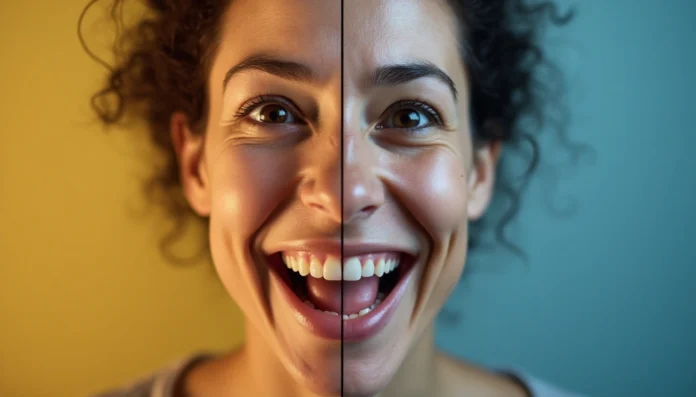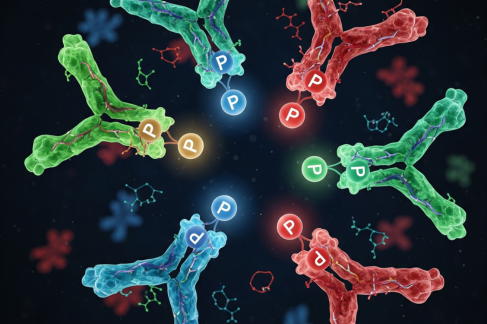Have you ever felt like you’re riding an emotional rollercoaster, with feelings that swing from joy to despair in what seems like moments? I certainly have. Despite our best efforts to maintain composure, emotions can often take us on unexpected journeys that leave us wondering what’s happening inside our brains.
The human emotional experience is fascinating, much like the dramatic events that unfold when a protagonist becomes entangled with a villain, keeping us on the edge of our seats. Indeed, our emotional lives can sometimes resemble the plot of a vivian green emotional rollercoaster track, full of unexpected twists and turns. However, what’s even more remarkable is how these emotional experiences showcase our strength and resilience. When feelings overwhelm us, we continue to fight and persevere, just as compelling characters do in powerful narratives.
In this article, I’ll explore the science behind our emotions—why we have them, how they’re processed in the brain, and what happens when they become intense. We’ll also examine the physical impact of emotions on our bodies and discover strategies to better navigate our emotional landscape. By understanding the mechanics of our feelings, we can learn to ride the waves rather than being swept away by them.
What are emotions and why do we feel them?
Emotions are more than just feelings—they’re complex reaction patterns involving experiential, behavioral, and physiological elements that help us respond to personally significant matters. Understanding emotions reveals why we sometimes feel caught in an emotional rollercoaster of highs and lows.
The evolutionary purpose of emotions
Throughout human history, emotions have served as vital adaptive mechanisms. Charles Darwin first proposed in 1872 that emotions evolved to enhance our survival and reproductive success. His groundbreaking work demonstrated that emotional expressions are remarkably similar across cultures and even species, suggesting deep evolutionary roots.
Emotions primarily evolved to serve specific adaptive functions, including facilitating social interaction, enhancing threat detection, guiding decision-making, and regulating social behavior. Furthermore, emotions help us make rapid decisions without extensive conscious thought—a crucial advantage when faced with dangerous situations where deliberation could cost us our lives.
Basic vs. complex emotions
Scientists categorize our emotional experiences into two distinct types. Basic emotions are immediate, instinctual responses that feature universally recognizable facial expressions. Psychologist Paul Ekman identified six primary emotions: anger, disgust, fear, happiness, sadness, and surprise—though some researchers suggest there may be only four.
Complex emotions, meanwhile, are essentially blends of basic emotions influenced by personal experiences and cultural contexts. For instance, grief combines surprise, denial, sadness, and anger, while jealousy mixes anger, fear, and sadness. Unlike basic emotions, these complex feelings vary significantly across people and cultures.
How emotions help us survive
Emotions essentially act as our internal alarm system, activating rapid responses to potential threats. Fear, for example, triggers physiological reactions that prepare us for danger—widening our visual field, increasing the speed of eye movement, and initiating fight-or-flight responses. Consequently, disgust prevents us from consuming harmful substances, while happiness reinforces beneficial behaviors.
Our emotions also enhance memory—events that trigger strong emotions are remembered more vividly, allowing us to learn from past experiences. Additionally, through facial expressions and body language, emotions facilitate social communication, helping us convey internal states to others and strengthen social bonds necessary for cooperation and survival.
The next time you find yourself on an emotional rollercoaster, remember that these feelings aren’t random—they’re sophisticated survival tools shaped by millions of years of evolution.
The science behind emotional highs and lows
The intricate mechanisms governing our emotional states involve sophisticated neural networks that determine how we experience the peaks and valleys of our feelings.
How the brain processes emotions
At the core of our emotional experiences lies the limbic system—a network of brain structures working in concert to process our feelings. The amygdala serves as our emotional command center, constantly evaluating sensory information and assigning emotional value to our experiences. This almond-shaped structure is particularly responsive to fear and negative emotions, helping us identify potential threats. Alongside the amygdala, other brain regions like the prefrontal cortex, insula, and cingulate cortex form an interconnected network that shapes our emotional responses.
The role of neurotransmitters like dopamine and serotonin
Our emotional rollercoaster is primarily driven by chemical messengers called neurotransmitters. Dopamine, often labeled the “feel-good hormone,” creates temporary feelings of pleasure and reward when released. It motivates us toward positive experiences and fuels our desire for more. Serotonin, on the other hand, functions as a natural mood stabilizer, creating longer-lasting feelings of well-being and happiness. The optimal range for serotonin in the blood is generally 50–220 nanograms per milliliter, whereas dopamine typically remains below 30 picograms per milliliter. Together, these chemicals form a delicate balance that regulates our emotional state.
Why emotions can feel overwhelming
During intense emotional experiences, our bodies undergo significant physiological changes. Specifically, when we feel overwhelmed, cortisol—the stress hormone—surges through our system while serotonin levels simultaneously deplete. This combination creates those intense feelings of despair or anxiety that can seem uncontrollable. Physical symptoms often accompany these emotional peaks, including a racing heartbeat, shortness of breath, and sometimes chest pain. Fortunately, our brains have built-in regulation systems, primarily in the prefrontal cortex, which help manage emotional responses through processes like reappraisal—consciously changing how we think about emotional situations.
How emotions affect your body and behavior
Your body serves as a living canvas for your emotions, displaying their effects through various physical and behavioral changes. The emotional rollercoaster we experience doesn’t just happen in our minds—it manifests throughout our entire physiology.
Physical symptoms of emotional stress
When emotions intensify, they trigger your autonomic nervous system, creating measurable physical responses. This activation produces distinct patterns based on which emotion you’re experiencing. Stress commonly causes headaches, dizziness, muscle tension, jaw clenching, digestive problems, and sleep disturbances. Moreover, strong emotions can lead to chest pain, increased heart rate, and even changes in skin temperature.
Interestingly, research shows that voluntarily producing facial expressions associated with specific emotions can trigger the corresponding physical responses in your body. This connection between emotional expression and bodily reaction further emphasizes how deeply intertwined our feelings are with our physical state.
Emotions and decision-making
Contrary to popular belief, emotions aren’t obstacles to sound decision-making—they’re essential components. Accordingly, studies of patients with brain injuries affecting emotional processing show they make consistently poor decisions despite understanding the logical consequences. This suggests emotions provide crucial guidance through what neuroscientists call “somatic markers.”
Nonetheless, emotions can sometimes lead us astray. When feeling emotionally charged, we often have three choices: react healthily, react negatively, or refuse to react. In fact, our emotional state colors our perception of situations, which subsequently influences our behavioral choices—sometimes creating regrettable outcomes.
Long-term effects of emotional suppression
Habitually suppressing emotions comes with significant costs. Research indicates that people who regularly suppress emotions experience less social support, reduced closeness to others, and lower social satisfaction. Above all, chronic suppression increases sympathetic nervous system activity, raising risks of cardiovascular disease and hypertension.
Suppression doesn’t just affect physical health—it changes how we interact with the world. Those who regularly bottle up feelings often develop a sense of emotional detachment or numbness, potentially leading to impaired decision-making abilities and altered perception of reality.
Can we control our emotional rollercoaster?
The good news is that we’re not simply passengers on our emotional rollercoaster—we can learn to become conductors. Research shows that 90% of top performers have high emotional intelligence, suggesting that our ability to manage emotions plays a crucial role in life success.
The role of emotional intelligence
Emotional intelligence encompasses self-awareness, self-regulation, social awareness, and social skills. First, self-awareness enables us to identify and understand our emotions and their impact on others. This awareness forms the foundation for emotional regulation. Self-regulation follows, allowing us to manage these emotions appropriately. By pausing before responding to intense feelings, you can avoid impulsive decisions. Taking a deep breath or stepping back physically creates space between emotions and actions.
Cognitive behavioral strategies
Cognitive behavioral therapy (CBT) offers powerful tools for managing emotional responses. CBT helps by identifying negative thinking patterns and replacing them with positive behavioral changes. Notably, cognitive restructuring involves examining unhelpful thought patterns and reframing them positively. Instead of thinking “I’m totally useless,” you might say, “That wasn’t my best work, but I contribute in many ways”. Such reframing changes how you feel and subsequently how you behave.
Mindfulness and emotional regulation
Mindfulness practices strengthen our ability to regulate emotions effectively. Regular meditation has been shown to improve attention, decrease job burnout, and enhance sleep quality. During mindfulness practice, you learn to experience thoughts and emotions without judgment, which reduces their intensity. Besides meditation, other mindfulness techniques include body scan exercises, sitting meditation, and walking meditation.
When to seek professional help
Professional help becomes necessary when emotional patterns disrupt daily functioning. Warning signs include persistent feelings of sadness or hopelessness, inability to cope with daily activities, significant changes in eating or sleeping patterns, or withdrawal from activities once enjoyed. Mental health professionals can provide strategies for effectively managing emotions and dealing with stress. Remember that seeking help isn’t a sign of weakness—it’s a step toward better emotional health.
Conclusion
Life certainly takes us through emotional peaks and valleys, though understanding this journey helps us navigate it with greater awareness. Throughout this article, we’ve explored how emotions serve as sophisticated evolutionary tools rather than random inconveniences. These feelings—from basic emotions like fear and happiness to complex blends like grief and jealousy—have helped humans survive and thrive for millennia.
The science behind our emotional experiences reveals a fascinating interplay between brain regions, neurotransmitters, and physiological responses. Our amygdala constantly evaluates situations while chemicals like dopamine and serotonin create the highs and lows we feel. This knowledge provides a roadmap for understanding why we sometimes feel overwhelmed or out of control.
Perhaps most importantly, emotions significantly impact our physical health, decision-making abilities, and social connections. Suppressing them can lead to serious long-term consequences, while learning to acknowledge and process them healthily enhances our overall wellbeing.
The good news? We can develop emotional intelligence through self-awareness, cognitive behavioral strategies, and mindfulness practices. These skills allow us to transform from passengers to conductors of our emotional experiences. Rather than being swept away by feelings, we can learn to recognize, understand, and regulate them effectively.
Next time you find yourself on an emotional rollercoaster, remember that your feelings serve a purpose. They contain valuable information about your needs, boundaries, and values. With practice and patience, anyone can build the skills needed to ride the waves of emotion with greater confidence and resilience.








